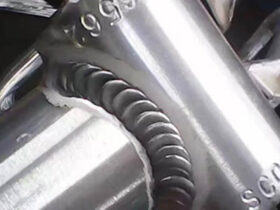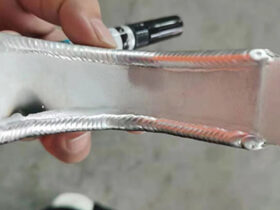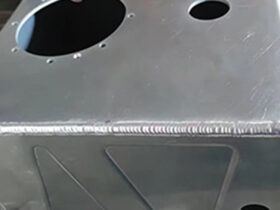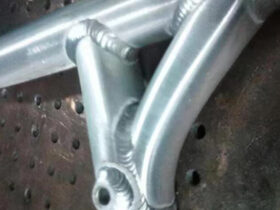Welding Aluminium
Welding Aluminium: Joint strength and versatility
Welding is a fundamental process in metalworking, and when it comes to aluminium welding, it presents unique challenges and opportunities. Aluminium welding is the art of joining aluminium parts together using a variety of welding techniques, and is vital in a wide range of industries, from aerospace to automotive.
Welding Aluminium is commonly performed using several methods, each with their own benefits and considerations:
1. Tungsten Inert Gas (TIG) Welding
TIG welding, also known as GTAW (gas tungsten arc welding), is a precise and versatile method. It uses a non-consumable tungsten electrode and a protective layer of inert gas to form a strong, clean weld. TIG welding is often preferred for thin aluminium plates and precision applications.
2. Metal Inert Gas (MIG) Welding
MIG welding or GMAW (Gas Metal Arc Welding) uses a consumable wire electrode and shielding gas to produce a weld. It is faster than TIG welding and is commonly used for thicker aluminium profiles and larger projects.
3. Electric arc welding
Arc welding techniques such as Shielded Metal Arc Welding (SMAW) or Stick Welding can also be used for aluminium welding, but are not commonly used due to the challenges posed by the oxide layer of aluminium.
4. Friction Stir Welding (FSW)
FSW is a solid-state welding process that uses frictional heat and mechanical pressure to join materials. It is particularly suitable for aluminium and produces high strength welds with minimal distortion.
Welding Aluminium is widely used in various industries:
1. Aerospace
In the aerospace industry, it is used in the manufacture of aircraft components and structures, including wings, fuselages and landing gear.
2. Automotive
Welding Aluminium is used in the manufacture of automotive frames, engine components and exhaust systems.
3. Construction
In the construction sector, aluminium welding is used for building structures such as bridges, skyscrapers and curtain walls. It is also used in residential and commercial buildings.
4. Marine
In the maritime industry, aluminium welding is used in the construction of boats and ships to produce durable, corrosion-resistant hulls and superstructures.
5. Electronics
The electronics industry uses aluminium welding to join aluminium components in devices such as smartphones and laptops.
Advantages of aluminium welding :
1. Lightweight strength
It combines the lightweight properties of aluminium with the strength of welded joints, making it ideal for applications where weight reduction is critical.
2. Corrosion resistance
Aluminium has a natural resistance to corrosion, which helps to extend the life of structures and components.
3. Versatility
Suitable for a wide range of aluminium alloys, thicknesses and welding methods, so it can be adapted to a variety of applications.
4. Accuracy
TIG welding, in particular, allows for precise control of the welding process and produces clean, aesthetically pleasing welds.
Conclusion
Welding Aluminium is a fundamental process that bridges the gap between the unique properties of aluminium and the needs of various industries. Aluminium is strong, lightweight and corrosion resistant, making it indispensable in aerospace, automotive, construction and many other fields. As technology and welding processes continue to advance, Welding Aluminium will play an increasingly important role in shaping the future of engineering and manufacturing.






